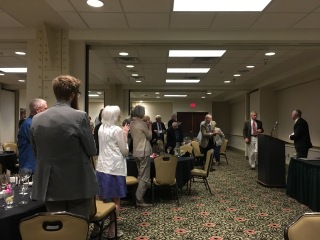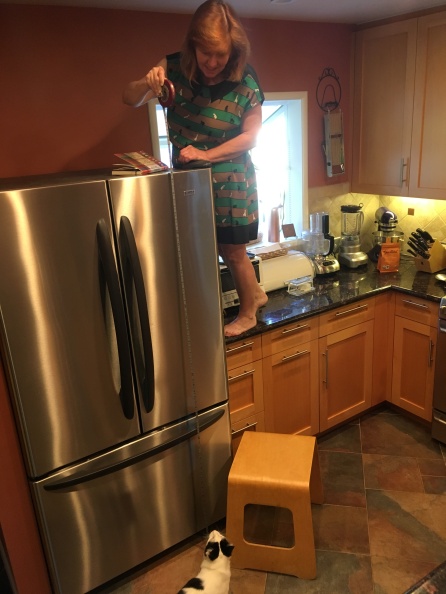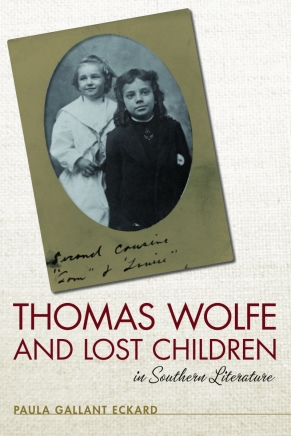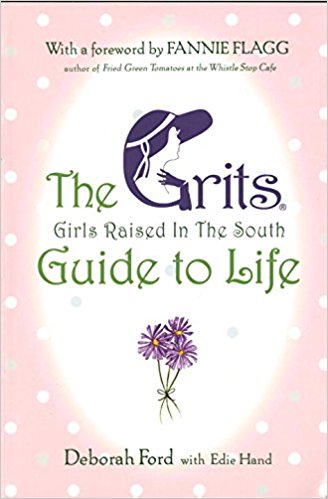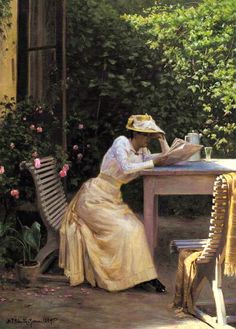
Remember the old childhood rhyme:
Sticks and stones may break my bones, but words will never hurt me?
There are variations on the words, but for anyone who was ever called names as a child, an adult might have recited this to you to remember the next time (and there was always a next time). It really didn’t help. Words do hurt.

I will never forget proudly riding my new bike to school in 4th grade and someone calling out, “Hey, fatty on the red bike!” All these years later, I still hurt for my 9-year old self.

Labels. I started thinking about them at work recently. One of our volunteers had the Dymo LabelMaker out, and was on a roll reorganizing the file cabinet of materials we hand out to animal adopters at the shelter.

I’ve always loved label makers. Getting things organized and in their place with the nicely typed label–such a satisfying thing to do. Between my educational background in library science and my years working cataloguing art in museums, I naturally tend to categorize and label things. Things, not people. Labels are great when we need to know what’s in our food, for example. Although the little labels put on every piece of produce in the grocery store drive me crazy. Someone has to put them on, and then they are hard to get off. Another reason to go to the farmers’ market. They don’t have to label the food to identify it.

What I did learn about the labels on our produce is they actually are a code that means more than just an identification for the checker for pricing. This IS important.

But it was a slow day and my mind drifted to what labels I would put on my coworkers and our volunteers. The Bossy One. The Talker. The Mother. The Scary One. The Big Sister.

And as I was doing this, I realized how unfair it is to reduce people to a single characteristic, and how hurtful it can be. Growing up, I always thought of me and my siblings with the labels The Pretty One (Cathy), The Funny One (Ellen), The Boy (Steve, obviously), and The Baby (me). My alternate label would have been The Shy One.

But I wanted to be pretty, and funny, too! I never wanted to be The Boy, but my brother was also The Athlete, and I, to my embarassment and humiliation, had (have) no athletic abilities whatsoever. We are all so much more complicated than simple labels imply. I worried about following in the footsteps of these siblings when it was my turn at Druid Hills High School, and how disappointed the teachers would be when the youngest Cottraux turned out to be a quiet, clumsy nerd.

Things happen in life that we don’t predict, and I never went to Druid Hills High School. I arrived in California at age 11 with no labels, but that didn’t last long.
Stereotypes abound in popular culture. In books and movies, there’s the Sassy Best Friend and the Goofy Sidekick and the Grumpy Old Man and many others. A popular movie in the 1980s, still beloved today, was The Breakfast Club (1985).

The 5 high school characters are clear stereotypes. I most heavily identified with the Ally Sheedy character, Allison, who in plot synopses is called The Basket Case. I disagree. She’s an introvert and an outcast, misunderstood, with things to say if anyone cared to ask.
One thing I disliked about the movie is that the key to opening up for Allison is getting a makeover by Princess and Popular Girl Claire, played by Molly Ringwald. Suddenly she’s happy and being noticed by the boys. Life doesn’t work that way.

One of my favorite television shows, and it unfortunately wasn’t on for long, was Paul Feig and Judd Apatow’s Freaks and Geeks (1999-2000), set in 1980. I graduated from high school in 1979, so the world depicted in the show is a little closer to my high school experience. A great show with a great cast, critically acclaimed, yet it failed to find an audience for reasons I don’t understand. I developed several celebrity crushes seeing the early careers of actors like Jason Segel and James Franco. I loved this show. Please watch if you find it.

The high school counselor, played by Dave Allen, reminds me so much of my senior English teacher. I’ve forgotten his name, but he was different. He took the desks out of the room and put in old couches. The first day of school he talked about how the movie Midnight Express (1978) was the scariest movie he’d ever seen (drug smuggling reference, if you’re unfamiliar with the movie). I was a little afraid of him, but he was a great teacher.
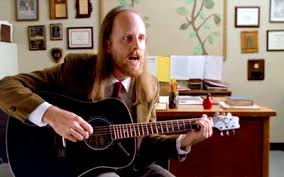
Labels and stereotypes, again. In 1977, Randy Newman released the song Short People, about the ridiculous nature of steretypes and prejudice. And as a short person, I found it highly amusing.

Ridiculous yet hurtful. So why do we persist in labeling each other? Within the family it starts, then continues when we go to school. Teachers label us. We decide we are good or bad at something based on stereotypes and labels. I was in school in the days when girls weren’t encouraged in math or science. According to Peter DeWitt in Education Week, teachers use a term Growth Mindsets; he discusses the labeling teachers use with students and how it leads them to treat students in fixed ways.
Adam Alter, writing for Psychology Today, describes a study done by Darley and Gross (1983) that is still relevant today:
College students watched a video of Hannah playing in her neighborhood, and read a brief fact sheet that described her background. Some of the students watched Hannah playing in a low-income housing estate, and her parents were described as high school graduates with blue collar jobs; the remaining students watched Hannah behaving similarly, but this time she was filmed playing in a tree-lined middle-class neighborhood, and her parents were described as college-educated professionals. The students were asked to assess Hannah’s academic ability after watching her respond to a series of achievement-test questions. In the video, Hannah responded inconsistently sometimes answering difficult questions correctly and sometimes answering simpler questions incorrectly. Hannah’s academic ability remained difficult to discern, but that didn’t stop the students from using her socioeconomic status as a proxy for academic ability. When Hannah was labeled “middle-class,” the students believed she performed close to a fifth-grade level, but when she was labeled “poor,” they believed she performed below a fourth-grade level.
Scott Barry Kaufman, also writing for Psychology Today, describes how we become trapped by labels. Labels can become self-fulfilling prophecies, and follow us long after the label has been lifted. I will always be that 9-year old girl humiliated by the mean taunts as I rode my beautiful red bike. And labeling doesn’t allow for variations and gradations:
When we split people up into such dichotomous categories, the large variation within each category is minimized whereas differences between these categories are exaggerated. Truth is, every single person on this planet has their own unique combination of traits and life experiences. While this isn’t true of objects, such as rocks, books, and television sets, it’s true of humans. Which is why we must be very, very careful when we allow labels to get in the way of our perceptions of reality. As the actor Anthony Rapp so aptly put it, “labels are for cans, not people.”

Have you ever seen the Diversity Day episode on the comedy The Office? Funny, yet a little too true in how stereotypes work.
I particularly like this quote from Ellen DeGeneres:

And here is one from Joan Baez:

I still get labeled. The Good Sport. Annoying Vegan. Book Nerd. Crazy Cat Lady.

We were out walking the dog this afternoon and I saw this on a telephone pole:
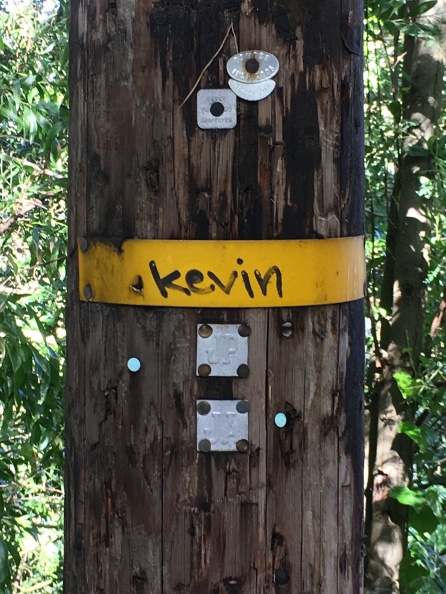
I laughed, and wondered why someone felt the need to write the name Kevin on the pole. “I shall call this telephone pole, hmmm, lemme think, Kevin!” It’s probably not even the pole’s name. Who knows.
I tried Googling songs about labeling, and came across this by The Ting Tings. Not my musical style, but it seemed appropos.
My name is Genevieve, and someday I am going to get back on that bike again. I don’t care what anyone says.








